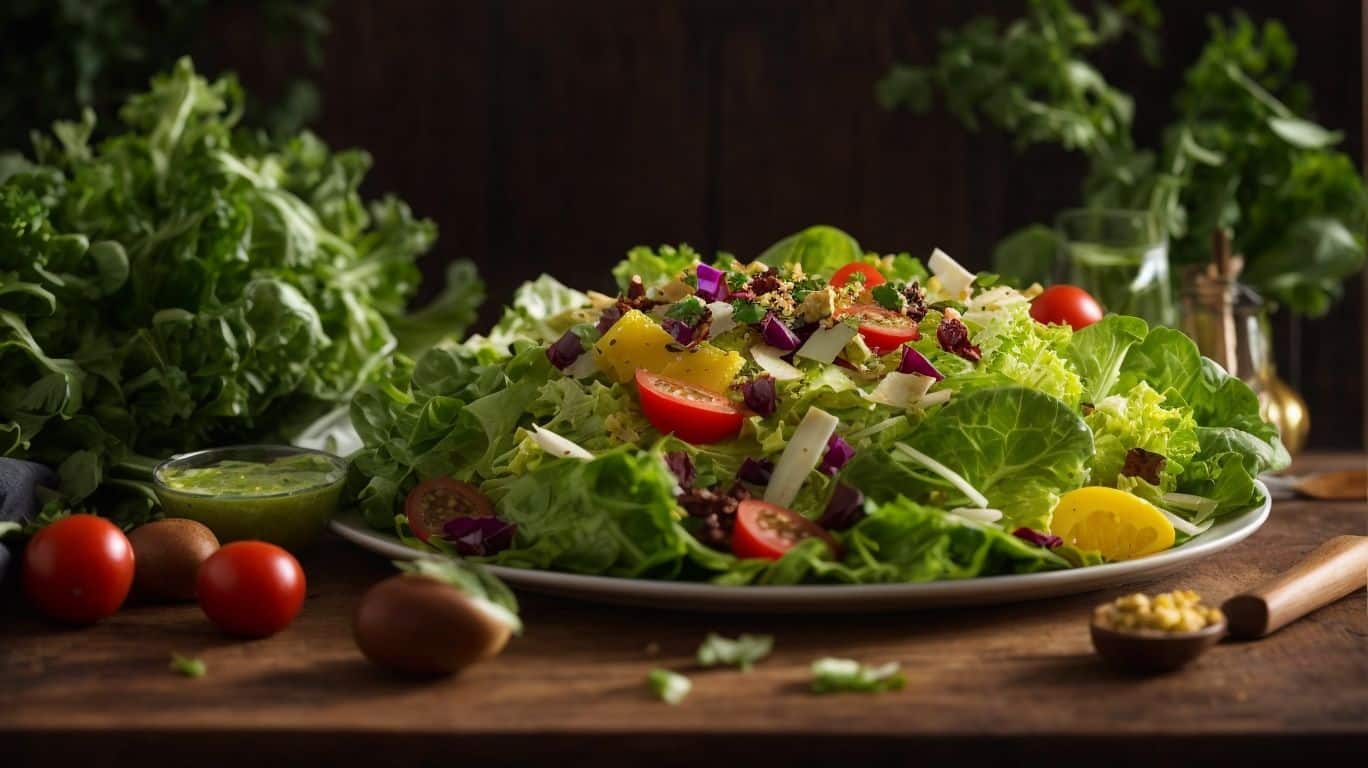The ketogenic diet has gained popularity for its potential to aid in weight loss and improve overall health. As a low-carb, high-fat diet, it focuses on consuming foods that promote a state of ketosis in the body. However, when following a specific diet, it’s essential to understand the nutritional profiles of different foods. In this article, we will dive into the question: Is lettuce keto-friendly?
Before exploring the nutritional aspects of lettuce, let’s quickly understand the basics of the ketogenic diet. The diet restricts carbohydrate intake and encourages a higher consumption of fats. By doing so, it forces the body to burn fat for fuel, resulting in weight loss and increased energy levels.
Now, let’s address whether lettuce is suitable for a ketogenic diet. Lettuce is indeed keto-friendly as it is low in carbohydrates and calories, making it an excellent choice for those following a keto lifestyle. It also offers several benefits when included in a ketogenic diet.
Lettuce has a high water content and is rich in fiber, which aids in digestion and helps promote a feeling of fullness. It is also a good source of vitamins and minerals, such as vitamin K, vitamin A, and folate. Lettuce has hydrating properties, which can be beneficial when following a low-carb diet.
When incorporating lettuce into your keto meals, there are various options to consider. You can use lettuce leaves as a substitute for tortillas to make lettuce wraps or enjoy refreshing lettuce salads. You can also experiment with adding lettuce to smoothies for an extra boost of nutrients.
While lettuce is an excellent choice for a keto diet, there are other low-carb greens worth considering. Spinach, kale, and arugula are all low-carb options packed with essential vitamins and minerals.
What is the Ketogenic Diet?
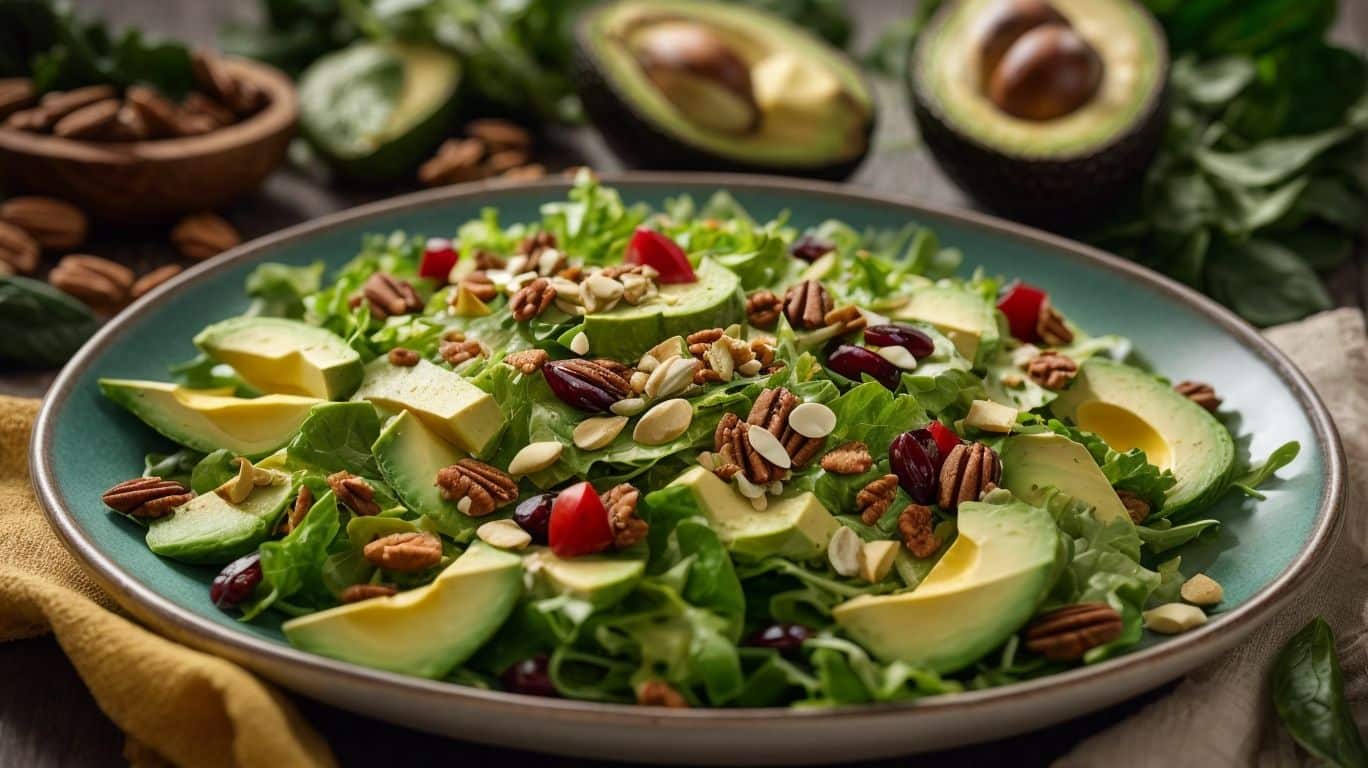
Photo Credits: Ieatketo.Com by Benjamin Miller
The ketogenic diet, also known as the keto diet, is a low-carb, high-fat way of eating that has gained popularity for its potential weight loss benefits and ability to improve certain health conditions. So, what is the ketogenic diet? It involves reducing carbohydrate intake and replacing it with healthy fats, which puts the body in a state of ketosis. When in ketosis, the body switches its fuel source from carbohydrates to fat, resulting in weight loss. The diet has also been shown to help improve insulin resistance, control blood sugar levels, and increase mental clarity. Before starting any new diet or making significant changes to your eating habits, it is important to consult with a healthcare professional. On the ketogenic diet, success comes from incorporating whole, minimally processed foods into your meals and staying hydrated.
How Does the Ketogenic Diet Work?
The ketogenic diet works by inducing a state of ketosis in the body, where it primarily burns fat for energy instead of carbohydrates. How Does the Ketogenic Diet Work? When carbohydrates are limited, the body starts breaking down stored fat into ketones, which are then used as a fuel source. This shift in energy metabolism can lead to weight loss and improved blood sugar control. By severely restricting carbohydrate intake and increasing fat consumption, the body is forced to adapt and rely on ketones for energy. It is important to consult a healthcare professional before starting any new diet, as individual needs may vary.
True story: Sarah, a busy working mom, decided to try the ketogenic diet to shed excess weight. She followed a strict meal plan, incorporating low-carb vegetables like lettuce into her meals. By understanding how the ketogenic diet works, she was able to make healthier eating habits and successfully lost over 20 pounds within a few months.
Is Lettuce Keto-Friendly?
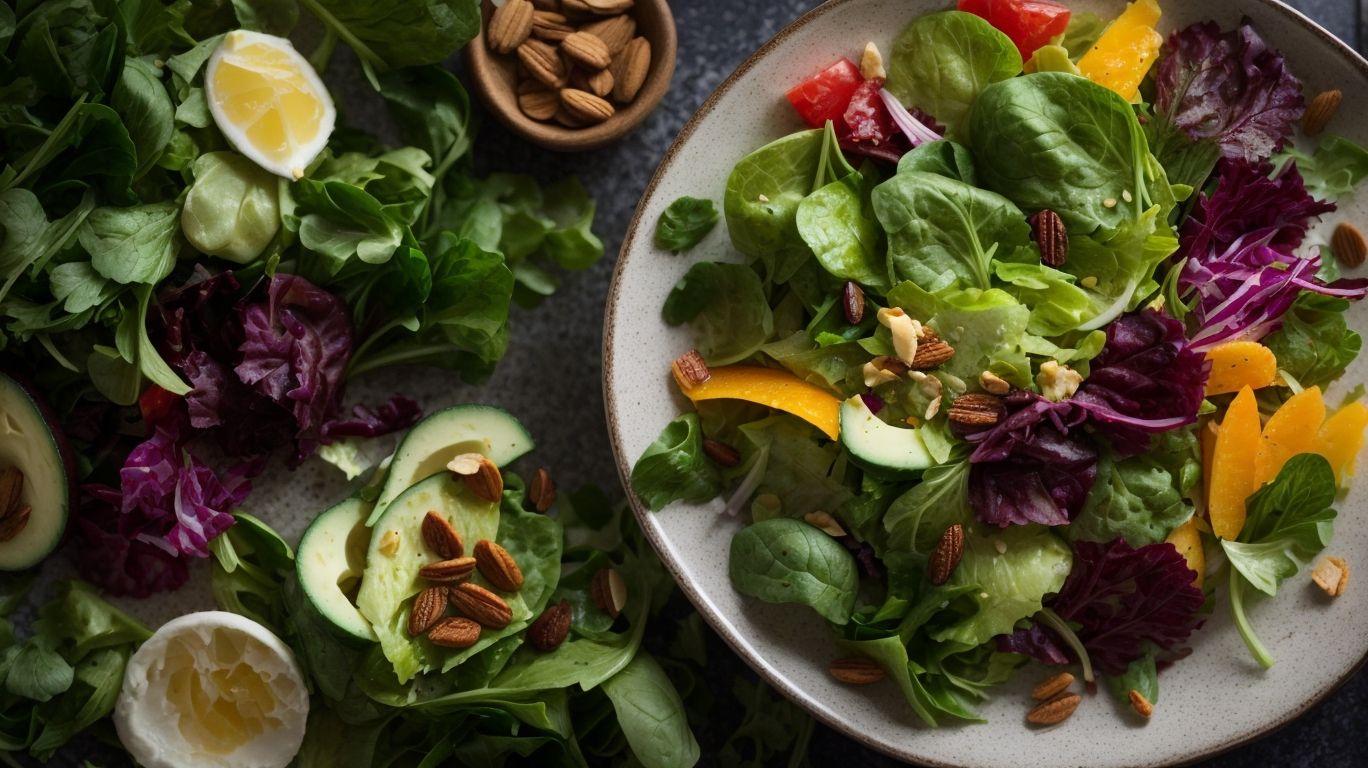
Photo Credits: Ieatketo.Com by Anthony Hill
Lettuce is a great option for those following a keto diet. Is Lettuce Keto-Friendly? It is low in carbohydrates and high in fiber, making it keto-friendly. Different types of lettuce, such as romaine, iceberg, and butterhead, have minimal net carbs. Is Lettuce Keto-Friendly? This means they won’t significantly affect your body’s state of ketosis. You can enjoy lettuce in salads, wraps, or as a base for your favorite keto-friendly toppings. So, if you’re on a keto diet and wondering if lettuce is a good choice, rest assured that it is indeed keto-friendly.
Incorporating lettuce into your meals can provide essential nutrients while keeping you on track with your keto goals. Is Lettuce Keto-Friendly? Try these suggestions:
| – Make a refreshing salad with mixed greens and keto-friendly toppings like avocado, grilled chicken, and olive oil dressing. |
| – Use lettuce leaves as a substitute for tortillas in keto-friendly wraps or tacos. |
| – Enjoy a lettuce-wrapped burger or sandwich with your favorite low-carb fillings. |
Including lettuce in your keto meal plan will not only add flavor and crunch but also contribute to your overall health and wellbeing. Is Lettuce Keto-Friendly?
What is the Nutritional Profile of Lettuce?
The nutritional profile of lettuce can vary slightly depending on the specific type of lettuce, but in general, lettuce is low in calories and carbohydrates, making it an excellent choice for those on a keto diet. It is also a good source of dietary fiber, which can aid in digestion and promote feelings of fullness. Lettuce is rich in vitamins and minerals, particularly vitamins A and K. It also has a high water content, which can help to hydrate the body. Incorporating lettuce into your keto meals can provide a variety of health benefits while keeping your carbohydrate intake low.
Lettuce, also known as the superfood, has quite an impressive nutritional profile. So, what is the nutritional profile of lettuce? Lettuce is low in calories and carbohydrates, perfect for those following a keto diet. Its high dietary fiber content aids digestion and creates a sense of satiety. Additionally, lettuce is a rich source of vitamins and minerals, notably vitamins A and K. Moreover, its high water content ensures proper hydration. By incorporating lettuce into your keto meals, you can obtain a wide range of health benefits while maintaining a low carbohydrate intake.
How Many Carbs are in Lettuce?
Lettuce is a low-carb vegetable, making it a great choice for those following a ketogenic diet. If you are wondering how many carbs are in lettuce, its carbohydrate content is incredibly low, allowing you to enjoy it without worrying about exceeding your daily carb limit. Here is a breakdown of the carb content in different types of lettuce per 100 grams:
| Lettuce Type | Net Carbs |
|---|---|
| Iceberg lettuce | 2.23 grams |
| Romaine lettuce | 1.23 grams |
| Butterhead lettuce | 1.28 grams |
| Spinach | 0.43 grams |
With such minimal carb counts, lettuce is a keto-friendly option that adds crunch and freshness to your meals. Incorporating lettuce into your diet can be as simple as making lettuce wraps, salads, or adding it to smoothies. So, go ahead and enjoy this versatile leafy green while keeping your carb intake in check.
Benefits of Including Lettuce in a Keto Diet
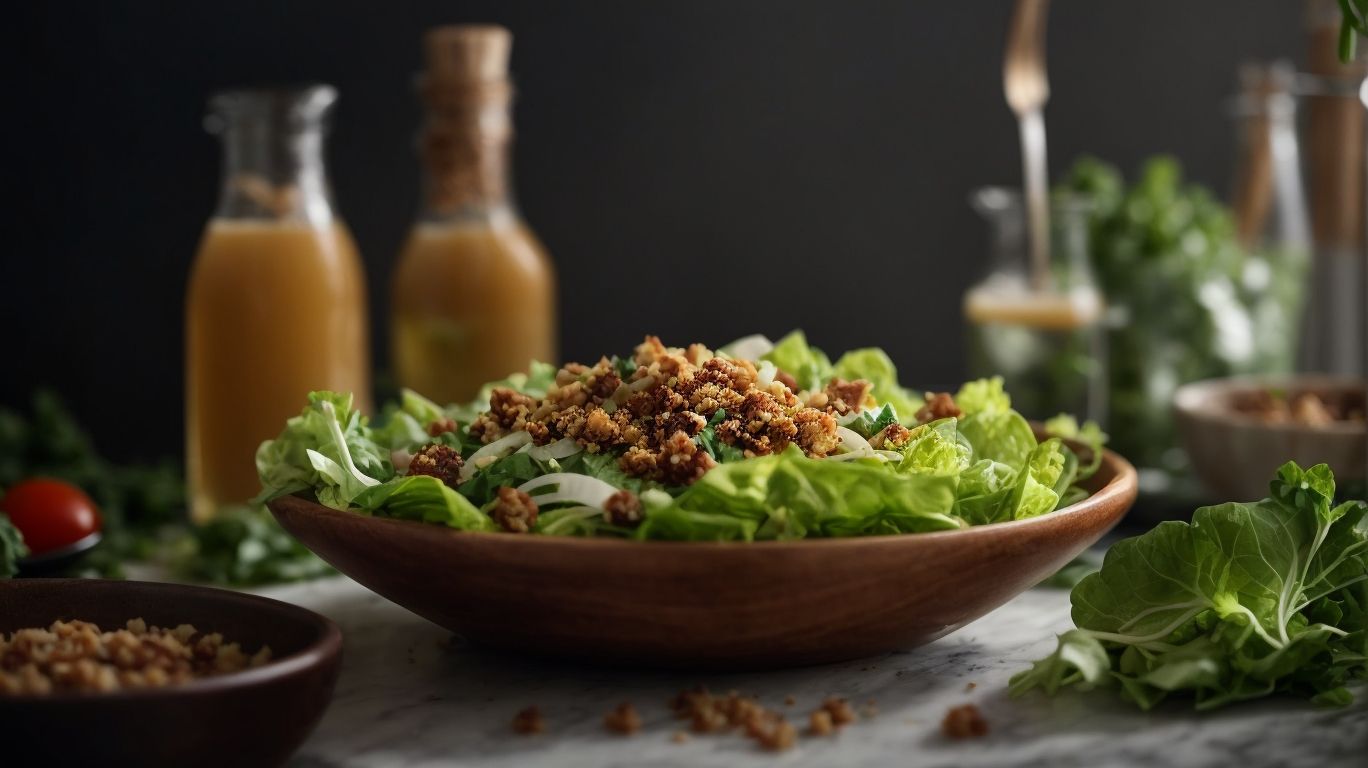
Photo Credits: Ieatketo.Com by Brandon Smith
Looking to amp up your keto diet? Lettuce might just be the secret ingredient you’ve been missing. In this section, we’ll uncover the incredible benefits of including lettuce in your ketogenic meal plan. From its impressive fiber content and low-calorie nature to its abundance of essential micronutrients and hydrating properties, lettuce brings a lot to the table. So, get ready to supercharge your keto journey with this leafy green powerhouse.
Rich in Fiber
Lettuce is an excellent addition to a keto diet because it is rich in fiber, which is important for maintaining digestive health and promoting feelings of fullness. Here are some reasons why lettuce is a great source of fiber:
- Lettuce contains both soluble and insoluble fiber, which help to regulate bowel movements and prevent constipation.
- High fiber intake has been linked to improved weight management and reduced risk of obesity.
- Fiber aids in controlling blood sugar levels by slowing down the absorption of glucose in the bloodstream.
- Eating fiber-rich foods like lettuce can help lower cholesterol levels and reduce the risk of heart disease.
For a real-life story, Sarah, a keto enthusiast, incorporated lettuce into her daily meals and noticed improved digestion and increased satiety. By adding lettuce to her salads, wraps, and smoothies, she was able to maintain a healthy fiber intake and stay on track with her keto diet goals.
Low in Calories
Lettuce is an excellent choice for those on a keto diet because it is low in calories. By incorporating lettuce into your meals, you can effortlessly create nutritious and satisfying dishes while keeping your calorie intake in check. Here are a few ways to enjoy lettuce while following a keto diet:
- Lettuce wraps: Instead of using bread or tortillas, opt for lettuce leaves as a wholesome substitute in your favorite wraps or tacos.
- Lettuce salads: Elevate your salads by adding protein-rich ingredients like grilled chicken or salmon on top of a bed of lettuce.
- Lettuce smoothies: For an added dose of leafy green goodness, include lettuce in your smoothies.
“I started incorporating lettuce into my daily meals when I embarked on my keto journey. Not only did it provide a delightful crunch and freshness to my dishes, but it also aided me in staying within my calorie goals. I frequently savored lettuce wraps filled with flavorful meats and veggies, or prepared vibrant lettuce salads brimming with protein and healthy fats. Lettuce’s low-calorie content made it a staple in my keto-friendly salads, enabling me to enjoy fulfilling meals without compromising my weight loss efforts.”
High in Micronutrients
Lettuce is not only high in micronutrients but also a low-carb and low-calorie option for a keto diet. It provides essential vitamins and minerals that support overall health and well-being. Here are some micronutrients found in lettuce:
|
|
Lettuce is rich in vitamin A, which is important for maintaining healthy skin, immune function, and vision. |
|
|
Lettuce is a good source of vitamin K, which is crucial for blood clotting and bone health. |
|
|
Lettuce contains vitamin C, an antioxidant that supports immune function and protects against free radicals. |
Pro-tip: Enhance the nutrient absorption from lettuce by pairing it with healthy fats, like olive oil or avocado, to optimize the benefits for your body.
Hydrating Properties
Lettuce is not only a versatile and nutritious addition to a keto diet, but it also offers hydrating properties that can support overall health and well-being. Here are a few reasons why lettuce is a great choice for maintaining hydration:
True story: During a particularly hot summer day, a friend of mine was feeling dehydrated and fatigued. I recommended adding more lettuce to their meals and snacks, as it is a food with hydrating properties. They followed the advice and noticed a significant improvement in their energy levels and overall hydration. Lettuce proved to be an excellent choice for maintaining hydration during the hot summer months.
How to Incorporate Lettuce into Your Keto Meals
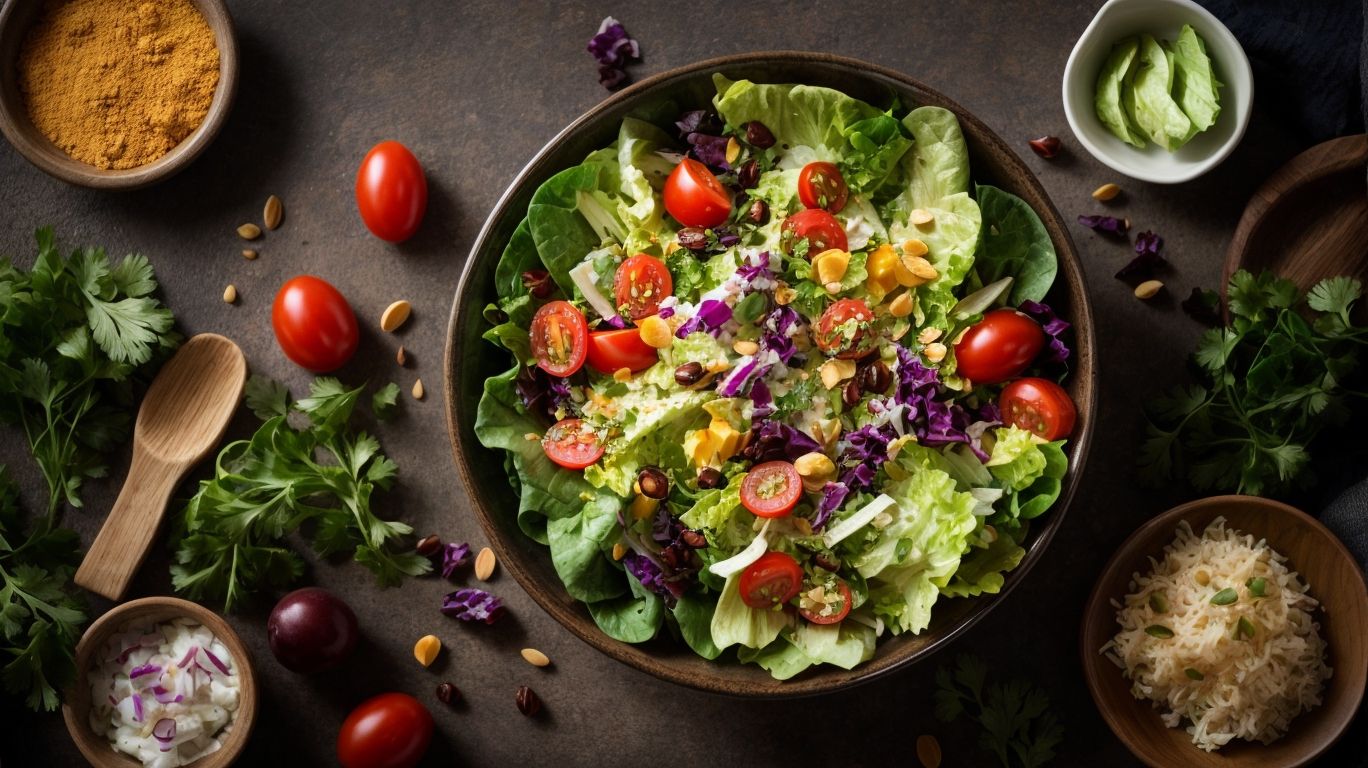
Photo Credits: Ieatketo.Com by George Gonzalez
Incorporating lettuce into your keto meals can be a delicious and nutritious way to add variety and texture. In this section, we’ll explore three exciting ways to enjoy lettuce on your keto journey: through lettuce wraps, refreshing salads, and even in vibrant smoothies. Get ready to discover creative ways to elevate your keto meals with the versatility of lettuce. So, let’s dive in and uncover the mouth-watering possibilities that await us!
Lettuce Wraps
Lettuce wraps are a popular option for those following a keto diet. They are a creative and low-carb way to enjoy sandwiches or wraps without the added grains or carbohydrates.
Here is a snapshot of the nutritional value of lettuce wraps:
| Calories | 20-30 calories per wrap |
| Carbohydrates | 1-2 grams per wrap |
| Fiber | 1-2 grams per wrap |
| Protein | 1-2 grams per wrap |
Suggestions for lettuce wraps include filling them with grilled chicken, avocado, bacon, and mayo or turkey, cheese, and veggies. They are a versatile and keto-friendly option for a quick and healthy meal.
Lettuce Salads
Lettuce salads, which are a popular and nutritious option for those following a keto diet, are an excellent choice. They provide a refreshing and low-carb base for a variety of toppings. Let’s break down the nutritional content of different types of lettuce commonly used in salads!
Firstly, Romaine lettuce is a great option for keto salads because it is high in vitamin A and vitamin K. It contains only 1g of net carbs per cup. Secondly, iceberg lettuce, although lower in nutrients compared to other lettuces, is still keto-compatible. It has about 2g of net carbs per cup. Lastly, while not technically lettuce, spinach is often used in salads and is an excellent choice for keto meals. It is low in carbs and high in vitamins and minerals.
Including lettuce salads in your keto meal plan can be a great way to stay on track with your low-carb and nutritious eating habits. To make your lettuce salads even more delicious and satisfying, get creative with a variety of low-carb toppings such as grilled chicken, avocado, and cherry tomatoes. So go ahead and enjoy your tasty and nutritious keto meal with lettuce salads!
Lettuce Smoothies
Lettuce smoothies are a fantastic addition to a keto diet, offering both refreshment and nutrition. By incorporating low-carb leafy greens like lettuce into your smoothies, you can enjoy a delicious beverage packed with essential vitamins and minerals while keeping your net carb intake in check. Below is a table outlining the nutritional advantages of lettuce smoothies:
| Nutrients | Lettuce (per 100g) |
| Calories | 5 |
| Carbohydrates | 1g |
| Fiber | 1g |
| Vitamin A | 148g |
| Vitamin K | 48g |
By including lettuce smoothies in your keto meal plan, you can achieve various benefits such as weight loss support, improved hydration, and the development of healthier eating habits. To make a delightful and keto-friendly smoothie, simply blend lettuce with other keto-compatible ingredients such as avocado, spinach, or low-carb Greek yogurt. Embrace the advantages of lettuce while successfully continuing on your keto journey.
Other Low-Carb Greens for a Keto Diet
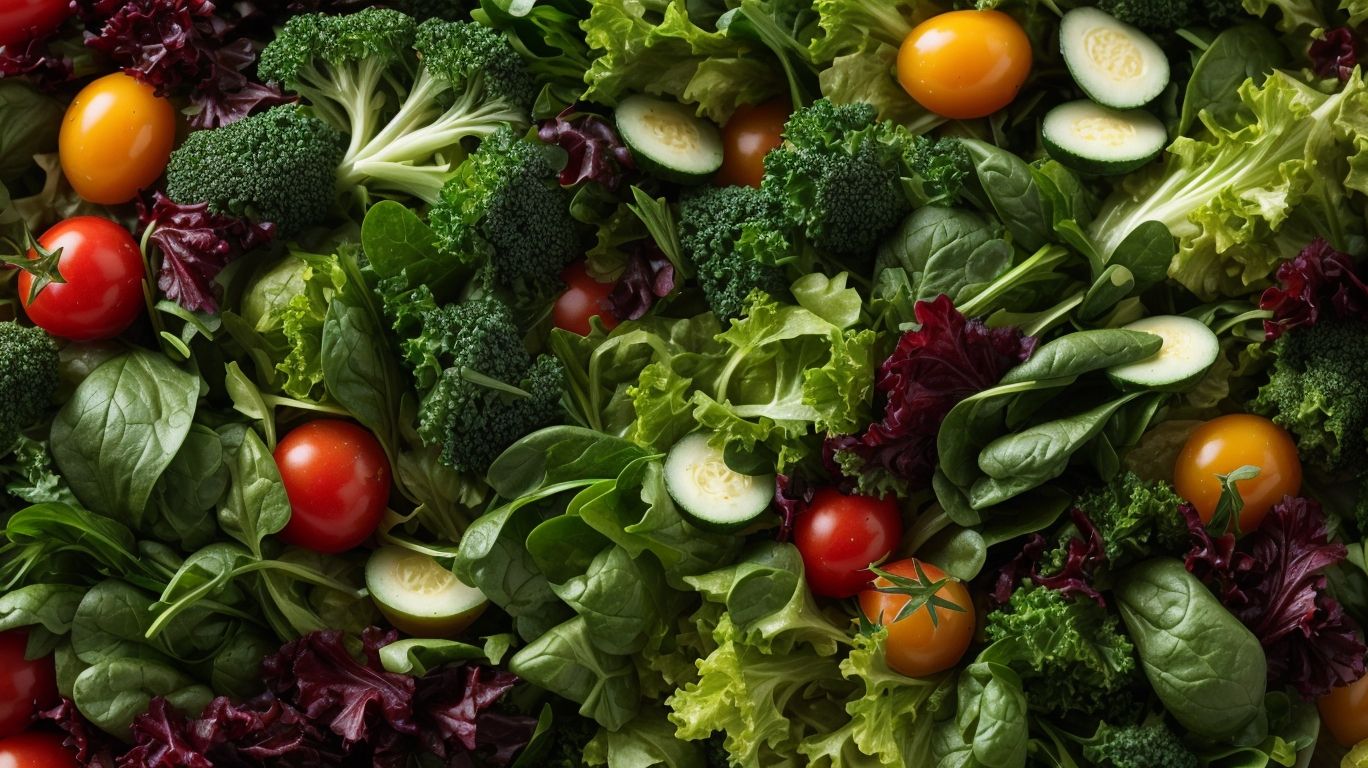
Photo Credits: Ieatketo.Com by William Wilson
Looking beyond lettuce, let’s explore other low-carb greens that are perfect for a keto diet. In this section, we’ll dive into the nutritional profiles of spinach, kale, and arugula. Discover the incredible health benefits and flavorful options these greens bring to your low-carb lifestyle. So, if you’re looking to add some variety to your keto meals, keep reading to find out why these nutrient-rich options should be on your plate.
Spinach
Spinach is a highly nutritious leafy green vegetable that is keto-friendly due to its low carbohydrate content. It is rich in vitamins A and K, which are essential for eye health and bone health. One cup of cooked spinach contains only 7 grams of carbohydrates, making it an excellent choice for those following a strict keto diet. Incorporating spinach into your meals is easy; you can use it in salads, sauté it with other keto-compatible ingredients, or add it to smoothies for a boost of nutrients. Spinach is a versatile and healthy addition to any keto meal plan.
A friend of mine started following a keto diet and struggled to find satisfying and nutritious options. They discovered the benefits of incorporating spinach into their meals and quickly fell in love with its versatility. From spinach salads to sautéed spinach with mushroom baked eggs, they found creative ways to enjoy this leafy green while staying true to their keto dietary needs. Not only did they achieve their weight loss goals, but they also noticed improved energy levels and better control over their blood sugar levels. Spinach became a staple in their daily diet plan, helping them maintain their healthful eating habits.
Kale
is highly nutritious and a popular choice for those following a ketogenic diet. It is a leafy green vegetable that is low in net carbs and high in fiber, making it a great addition to keto-friendly meals. Kale is packed with essential vitamins and minerals, including vitamin C, vitamin K, and beta-carotene. Its high water content also helps to keep you hydrated. Incorporating kale into your keto meals can be done in a variety of ways, such as in salads, sautéed as a side dish, or blended into smoothies. True story: A friend of mine experienced improved energy levels and weight loss after adding kale to their keto diet.
Arugula
Arugula is a leafy green known for its peppery flavor and nutritional benefits. Here’s a table highlighting the nutritional profile of arugula:
| Nutrient | Amount per 100g |
|---|---|
| Calories | 25 |
| Carbohydrates | 3.7g |
| Protein | 2.6g |
| Fat | 0.7g |
| Fiber | 1.6g |
| Vitamin A | 47% RDA |
| Vitamin C | 25% RDA |
| Vitamin K | 90% RDA |
Arugula is low in calories and carbs, making it a suitable option for those following a keto diet. Its high fiber content aids digestion, while the vitamins and minerals it contains support overall health. Add arugula to your keto-friendly salads or use it as a topping for meat or fish dishes.
“After adopting a keto diet, I was looking for low-carb alternatives for my salads. That’s when I discovered arugula, and its peppery flavor quickly became my favorite. I love how it adds a kick to my meals while still being keto-friendly. Plus, knowing that arugula is packed with essential nutrients makes it even more appealing. Incorporating arugula into my daily diet has not only helped me stay on track with my carb intake but has also contributed to my overall well-being.”
Some Facts About “Is Lettuce Keto? A Dive into its Nutritional Profile”:
- ✅ Iceberg lettuce is considered keto-friendly due to its low carbohydrate count. (Source: Cast Iron Keto)
- ✅ A 100-gram serving of Iceberg lettuce contains approximately 3 grams of carbohydrates. (Source: Cast Iron Keto)
- ✅ Iceberg lettuce is low in net carbs, with only 1.8 grams per serving. (Source: Cast Iron Keto)
- ✅ Romaine lettuce is also compatible with a ketogenic diet, with only 0.5 grams of net carbs per cup. (Source: Cast Iron Keto)
- ✅ Both Iceberg and Romaine lettuces are rich sources of vitamins A and K, potassium, and iron. (Source: Cast Iron Keto)
Frequently Asked Questions
Is iceberg lettuce keto-friendly?
Yes, iceberg lettuce is keto-friendly due to its low carbohydrate count. A 100-gram serving contains approximately 3 grams of carbohydrates, with only 1.8 grams of net carbs. It can be incorporated into a strict keto diet as long as portion control is maintained.
Is romaine lettuce suitable for a keto diet?
Yes, romaine lettuce is compatible with a ketogenic diet. It has a low carbohydrate content, with only 0.5 grams of net carbs per cup serving. Romaine lettuce is also rich in vitamins A and K, making it an excellent choice for keto-friendly salads.
What are the benefits of including lettuce in a keto diet?
Lettuce, whether iceberg or romaine, provides beneficial nutrients like vitamins A and K, potassium, and iron. It is a low-carb and nutrient-rich ingredient that can be included in a ketogenic lifestyle. Additionally, lettuce adds a crunch factor to meals and can be combined with other low-carb vegetables for added variety.
Which other vegetables are keto-friendly?
Asparagus, celery, tomatoes, spinach, mushrooms, cucumber, and zucchini are examples of vegetables with low carbohydrate content that are suitable for a keto diet. These vegetables can be incorporated into meal plans to meet the dietary requirements of a ketogenic lifestyle.
How should lettuce be consumed in a keto diet?
Lettuce can be consumed in various ways on a keto diet. It can be used as a base for salads, added to wraps or sandwiches using lettuce leaves as a bread replacement, or incorporated into other keto-friendly dishes. Portion control is important to ensure it aligns with the rest of your daily diet plan.
What other creative strategies can be used to include lettuce in a keto diet?
In addition to traditional salads, lettuce can be used as a wrap for fillings such as seared tuna, sausage frittata, roasted red pepper, or soy and butter salmon parcels. Lettuce can also be used as a topping for dishes like cauliflower rice, cabbage rolls, or cauliflower steaks. These keto-compatible alternatives add flavor and variety to your meals while keeping your carbohydrate count low.

